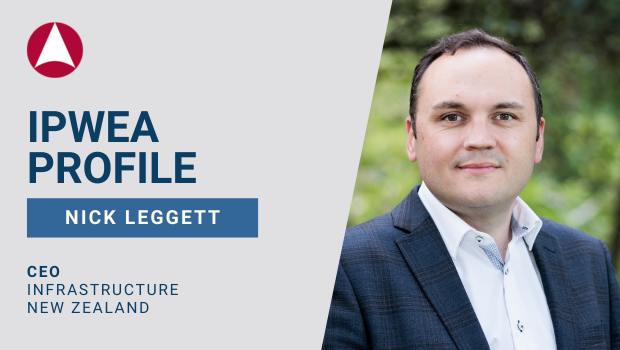New Zealand, says Nick Leggett, is having an “infrastructure moment” with a widespread public understanding of the need to invest in new infrastructure and plan for the future.
While this is positive, Leggett warns that the moment could be lost unless New Zealand embraces bi-partisanship on project planning, and also considers new approaches to investment and funding.
“I think there’s an acknowledgment from a majority of the public that we need to do better with infrastructure,” says Leggett, the chief executive of industry body Infrastructure New Zealand.
“For some people, the knee jerk reaction is always to say that we need to spend more, but while we do need to invest more we also have to have a better understanding of what we are building, and also utilise the private sector better than we have done in the past.”
The Luxon Government unveiled a NZ$120b plus National Infrastructure Pipeline in June this year to address the nation’s infrastructure deficit, along with the establishment of the National Infrastructure Agency (NIA) in December, an organisation to co-ordinate public and private funding.
Prime Minister Christopher Luxon has spoken of the need to “take the politics out of infrastructure,” and Leggett says the early expressions of support for the NIA from the Opposition Labour Party are positive.
“It is so important that the next government doesn’t come in and turn over all the deckchairs and change things, merge agencies and alter priorities,” says Leggett.
“We need to do better, and that means having a non-party political system for infrastructure planning and delivery which holds the politicians to account.”
The other change that New Zealand needs, according to Leggett, is to facilitate the greater involvement of the private sector, not just to build new infrastructure but also to fund it.
“We haven’t done the Public-Private Partnership extensively in New Zealand, and we don’t use tools like value uplift to understand the impact of investment,” he said.
“We don’t toll to generate revenue from infrastructure, and we don’t have volumetric charging for water anywhere near the extent we should have.”
All this, says Leggett, has restrained New Zealand’s pipeline of infrastructure delivery.
In some cases, public funds were used to fund the development of business cases for projects for which there was insufficient or no funding.
Leggett says that the private sector needs to be involved not just in the financing of infrastructure, but in its procurement, design and management over time.
He sees infrastructure as the key to helping New Zealand become the nation it wants to become.
In education, transport, health and digital connectivity infrastructure is the “supporting building blocks” but this has not always been fully recognised.
“We have had a ‘set and forget’ mode here in New Zealand where we build something and then forget about it,” he says.
“Actually, the real value comes over time and we haven’t been good in measuring the real benefits – social, environmental and economic – of the infrastructure we build.”
One of the issues which New Zealand is still grappling with is the idea of charging people for using infrastructure, rather than socialising the cost across the wider community.
Leggett suggests that direct charging should be considered in the future, not just for reasons of equity but because it created better a more disciplined regime around funding and maintaining the asset.
While the Luxon Government has ruled out extensive asset sales, Leggett believes that asset recycling with the aim of selling assets to revitalise existing assets or build new ones should be under consideration.
He points to New South Wales, a state Luxon visited earlier this year on a fact-finding mission on infrastructure, as an example of where this had been done effectively.
“What we need is not only a new consensus on our infrastructure pipeline but also a way of widening that pipeline so more is done at the same time,” says Leggett.
“The only way to do that is to release more capital, use more private capital and use the private sector’s skills to show internationally that New Zealand is building for the future and that we are prepared to invest in it.”














